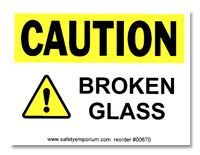 |
 Safety Emporium is a proud sponsor of this site. |
 |
Home Page --> Tutorial Lesson #1, Introduction and Safety
|
| Tutorial Lesson 1, Introduction and Safety | |
|---|---|
| Previous Lesson (Home) |
Lesson 2 (Terminology) |
Introduction
- *Some European countries have a formal and difficult program that a person must pass before earning the title "Master Glassblower". The United States does
The intent of this basic tutorial is not to make you an accomplished professional glassblower. It is designed to give you experience in performing a series of basic glassblowing seals that can be used in the fabrication and repair of simple to complex glass apparatus and glass systems. The lessons given are designed for use in the scientific field though many of the techniques may be applied to art glassblowing. It is assumed that you will be using glass from the borosilicate family (PYREX®, KIMAX® or DURAN®) and the instructions given are based on this assumption. Directions and information should be considered a foundation on which to develop your skills to whatever level you desire. These lessons are guidelines. Successfully obtaining an end product can be reached in many ways. Be creative and have fun!
Objectives
- Obtain basic knowledge of glass and glassblowing
- Fabricate simple scientific apparatus
- Repair glass apparatus and glass systems
Safety
Repairs to scientific glassware should be attempted with caution. Assuming the glassware was broken in use, or has been used in the laboratory at some point in time, it would be wise to assume the glass has some chemical residue on or in it. Do not attempt to repair any glass until it has been cleaned to your satisfaction. Many glassblowers as policy will not accept glassware for repair until the user has srcupulously cleaned the glass of all chemical and grease residue. Remember, as you heat the glass any outgassing that occurs is deposited directly into your mouth via the blowhose assembly.

Broken glass and leftover pieces should never be disposed of in the regular trash as this could cause serious injury to the custodial staff, someone picking through your trash, or a waste handler. Most organizations have established policies for dealing with "sharps". Sharps containers or buckets must only be used for disposal of broken glass, glass pipettes etc. - do not throw "regular" trash into them. If your organization uses disposable cardboard boxes, seal them up tightly with tape and make sure the hazards are made clear with signage such as DANGER BROKEN GLASS. Signs and labels such as the one on the right are available at vendors such as Safety Emporium.
Your glassblowing facility must adhere to all local, state and federal regulations for personal, property and environmental protection.
| Tutorial Lesson 1, Introduction and Safety | |
|---|---|
| Previous Lesson (Home) |
Lesson 2 (Terminology) |